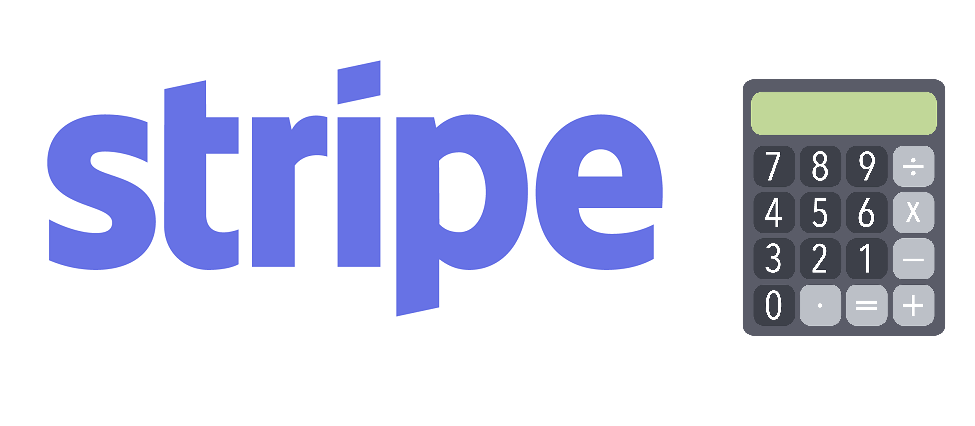Use this free stripe fee calculator to estimate how much you will pay in stripe fees, total amount you will receive and the right amount you should ask.
Stripe Fee Calculator
How the stripe fee calculator works
The Stripe fee calculator results provide clarity on the transaction costs involved, the net amount received by the seller, and the amount the seller should request from the buyer to achieve the desired outcome. This information is essential for sellers to accurately price their products or services and manage their finances effectively. To use the calculator simply type in the transaction amount , and using stripe’s fees (2.9% + $0.3) the calculator will compute the result for you.
Interpreting the stripe fee calculator result
- Stripe Fee:
- This indicates the amount of money that Stripe deducts as a fee for processing the transaction. It includes both a percentage of the transaction amount and a fixed fee per transaction.
- For example, if the Stripe fee is calculated to be $3.20 for a $100 transaction, it means that Stripe will deduct $3.20 from the total transaction amount as its processing fee.
- Amount Received:
- This represents the net amount that the seller will receive after Stripe deducts its fee from the transaction amount. It is calculated by subtracting the Stripe fee from the total transaction amount.
- Continuing with the example, if the total transaction amount is $100 and the Stripe fee is $3.20, then the amount received by the seller would be $100 – $3.20 = $96.80.
- Amount to Ask:
- This denotes the total amount that the seller should request from the buyer to ensure that the seller receives the desired amount after Stripe deducts its fee.
- It is calculated by adding the total transaction amount to the Stripe fee. This ensures that after the fee deduction, the seller receives the intended amount.
- Using the same example, if the total transaction amount is $100 and the Stripe fee is $3.20, then the amount to ask would be $100 + $3.20 = $103.20

Stripe, a leading payment processing platform, charges fees for facilitating online transactions. The fee structure typically includes a percentage of the transaction amount plus a fixed fee per transaction. For example, Stripe’s standard fee in the United States is 2.9% + $0.30 per successful charge. This means that for every transaction processed through Stripe, the platform deducts 2.9% of the transaction amount plus $0.30 as a fixed fee.
Stripe Fee vs PayPal Fee:
Comparing Stripe fees to PayPal fees is essential for merchants looking to choose the most cost-effective payment processing solution. While both Stripe and PayPal charge similar fees, there are differences in their fee structures and additional features.
- Stripe typically charges 2.9% + $0.30 per transaction, whereas PayPal’s fees vary depending on factors such as transaction volume, payment method, and country.
- PayPal’s fees starts at 3.49% + 49¢ for online transactions within the US to higher fees for international transactions or payments made with non-PayPal balance sources.
- PayPal offers a discounted fee structure for merchants with high transaction volumes, whereas Stripe maintains a consistent fee structure for all users.
Is Stripe Cheaper Than PayPal?
Determining whether Stripe is cheaper than PayPal depends on various factors, including transaction volume, average transaction size, and specific business requirements. In general, Stripe’s standard fee structure may offer competitive rates for businesses with consistent transaction amounts. However, PayPal’s discounted fee structure for high-volume merchants can be more cost-effective in certain scenarios.
How Much is Stripe Fee for $100, $200, $500?
To calculate the Stripe fee for different transaction amounts:
- For $100: Stripe fee = ($100 * 0.029) + $0.30 = $3.20
- For $200: Stripe fee = ($200 * 0.029) + $0.30 = $5.80
- For $500: Stripe fee = ($500 * 0.029) + $0.30 = $15.05
These calculations demonstrate that the Stripe fee increases proportionally with the transaction amount, as it includes both a percentage-based fee and a fixed fee per transaction.
Stripe Fees for Recurring Payments:
For merchants processing recurring payments or subscriptions, Stripe offers a separate fee structure tailored to subscription-based businesses. Stripe provides flexible recurring billing logic. Fees start at 0.5% of recurring transactions, which include any recurring invoices. However, Stripe also provides features such as subscription management, invoice generation, and proration handling, making it a comprehensive solution for recurring billing needs.
Stripe Alternatives:
While Stripe is a popular choice for online payment processing, several alternatives offer similar services with different fee structures and features. Some notable alternatives to Stripe include PayPal, Square, Authorize.Net, and Braintree. Each platform has its unique strengths and weaknesses, making it essential for businesses to evaluate their specific requirements and compare fee structures before selecting a payment processor.
Stax
Best alternative for big companies
Square
Best alternative for retailers
Helcium
Best budget-friendly alternative
Understanding Stripe fee calculation is important for merchants seeking to optimize their payment processing costs. With its transparent fee structure and comprehensive features, Stripe remains a preferred choice for many businesses. By comparing Stripe fees to PayPal fees, analyzing transaction costs for different amounts, and exploring alternatives, merchants can make informed decisions to maximize their profitability and streamline their payment operations. Moreover, utilizing a Stripe fee calculator can simplify the process of estimating transaction costs.
Other Tools
Fiverr Fee Calculator | Goat Fee Calculator | Idling Fuel Calculator | Intermittent Fasting Calculator
